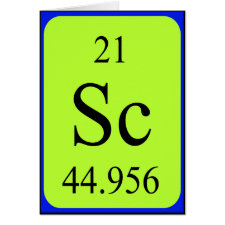
Authors: Chen JH, Li GP, Liu QL, Ni JC, Wu WB, Lin JM
Article Title: Cr(III) ionic imprinted polyvinyl alcohol/sodium alginate (PVA/SA) porous composite membranes for selective adsorption of Cr(III) ions.
Publication date: 2010
Journal: Chemical Engineering Journal
Volume: 165
Issue: (2)
Page numbers: 465-473.
DOI: 10.1016/j.cej.2010.09.034
Alternative URL: http://www.sciencedirect.com/science/article/B6TFJ-514R6FT-1/2/0e72609f8cf0dedeb859a71e8a5a015a
Abstract: In the present study, we prepared Cr(III) ionic imprinted membrane adsorbents (Cr(III)-PVA/SA) by blending sodium alginate (SA) with polyvinyl alcohol (PVA). In these new membrane adsorbents, polyethylene glycol was used as porogen, and glutaraldehyde was the cross-linking agent. Our new developed membrane adsorbents can be used without centrifugation and filtration. To investigate the adsorption kinetics of Cr(III) ions from aqueous solution onto this newly developed Cr(III)-PVA/SA, we performed a batch of experiments under different conditions by changing the concentration of Cr(III) ions in the Cr(III)-PVA/SA, pH value of the solution, adsorbent dose, initial Cr(III) ions concentration, adsorption temperature and contact time. Our Cr(III)-PVA/SA exhibited the maximum Cr(III) ions uptake capacity of 59.9 mg/g under the following conditions: 0.078 wt% of Cr(III) ions in the Cr(III)-PVA/SA, solution pH value of 6.0, adsorbent dose of 0.5 g/L, the initial Cr(III) ions concentration of 50 mg/L, at 25 °C. To study the mechanism of adsorption process, we examined the intra-particular diffusion model, Lagergren pseudo-first-order kinetic model and pseudo-second-order kinetic model, and found pseudo-second-order kinetic model exhibited the best correlation with our experimental data. Furthermore, our adsorption equilibrium data could be better described by the Langmuir equation. Competitive adsorption studies of the binary system of Cr(III)/Cu(II), Cr(III)/Cd(II) and the ternary system of Cr(III)/Cu(II)/Cd(II) were also investigated using Cr(III)-PVA/SA, the results indicated that selectively adsorbed amount of Cr(III) ion on Cr(III)-PVA/SA is significantly higher than that of Cu(II) and Cd(II) ions. We also used five times consecutive adsorption-desorption experiments to show that the Cr(III)-PVA/SA has high adsorption and desorption efficiencies
Template and target information: chromium ion, Cr(III)
Author keywords: sodium alginate, membrane, polyvinyl alcohol, adsorption, Cr(III)



Join the Society for Molecular Imprinting

New items RSS feed
Sign-up for e-mail updates:
Choose between receiving an occasional newsletter or more frequent e-mail alerts.
Click here to go to the sign-up page.
Is your name elemental or peptidic? Enter your name and find out by clicking either of the buttons below!
Other products you may like:
 MIPdatabase
MIPdatabase









